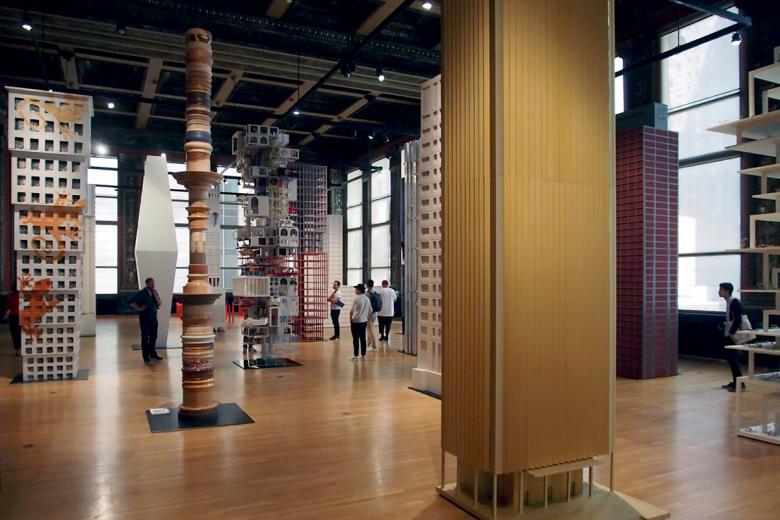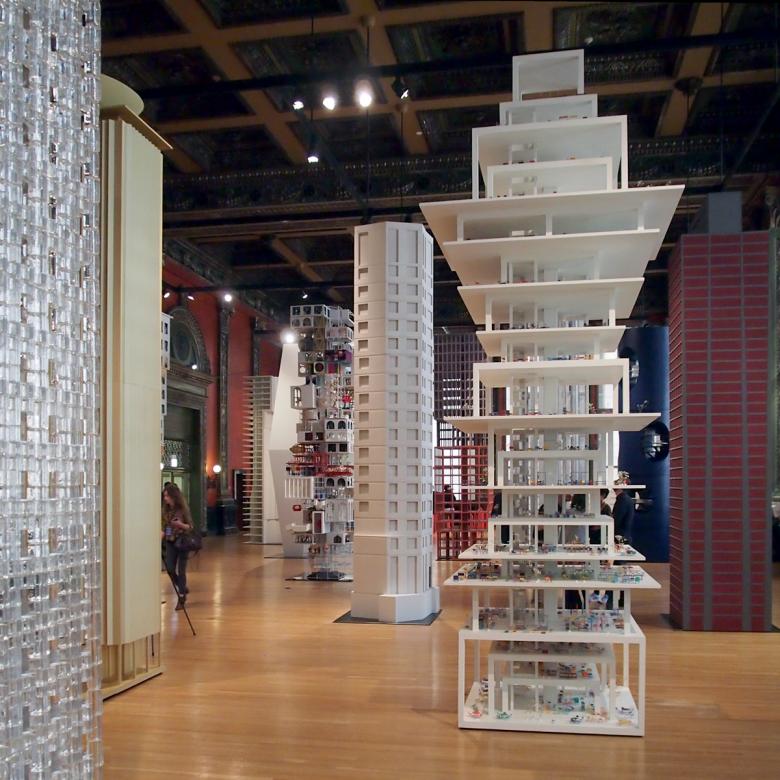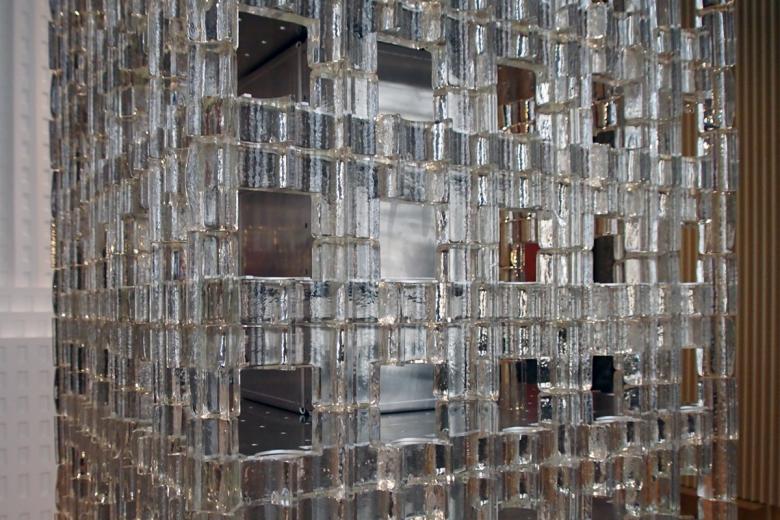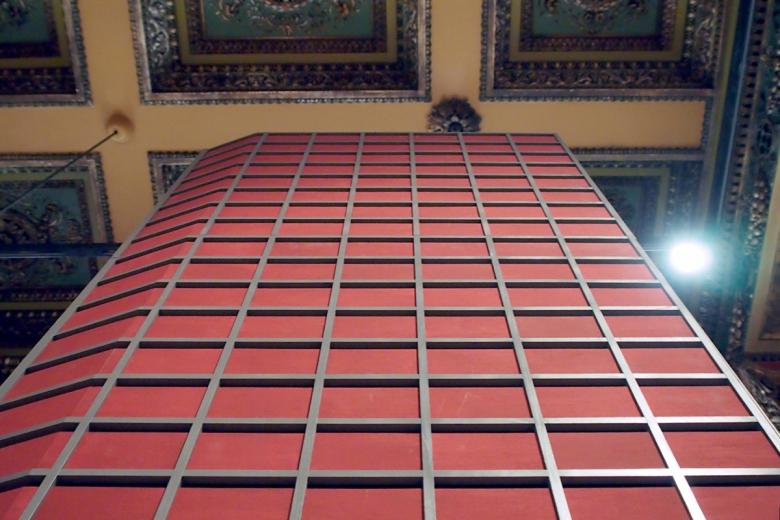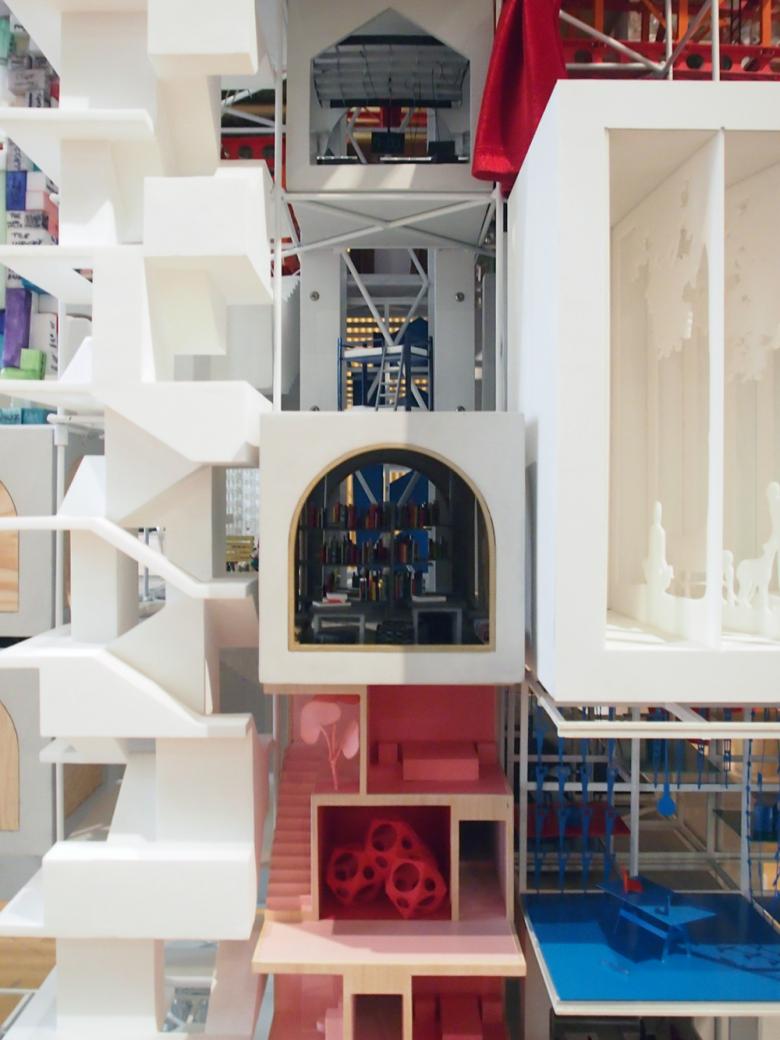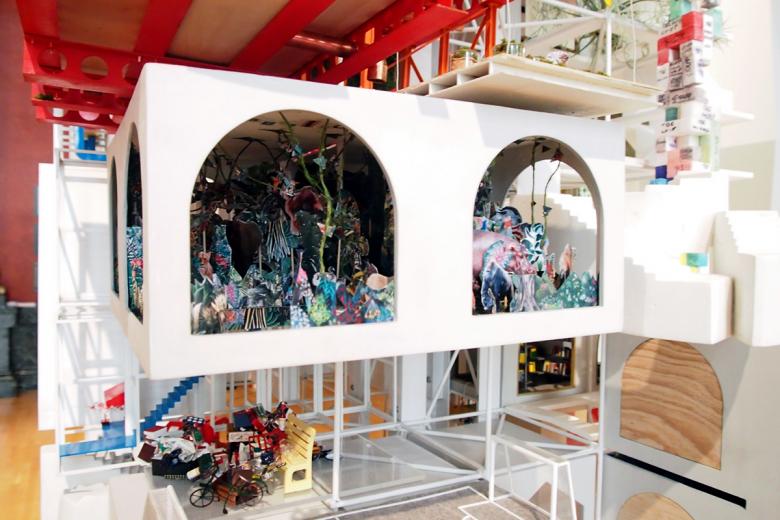22. September 2017
All photographs by John Hill/World-Architects
Two mini-exhibitions within the larger Chicago Architecture Biennial – Horizontal City and Vertical City – asked participating architects to examine the architecture of interiors and tall buildings; here we take a look at the latter.
Housed in the Chicago Cultural Center's fourth-floor Sidney R. Yates Hall, Vertical City takes advantage of the grand space by filling it with sixteen sixteen-foot-tall models of hypothetical skyscrapers. Contributors were asked by Biennial artistic directors Sharon Johnston and Mark Lee to "reconsider the 1922 brief for the design of a tower to house the Chicago Tribune newspaper company." Ironically, this comes one year after the Tribune sold its iconic tower designed by competition winners Howells and Hood for a mixed-use development. Furthermore, this is not the first time architects reconsidered the tower competition; Chicago architect Stanley Tigerman and the "Chicago Seven" curated an exhibition of Late Entries to the Tribune Competition in 1980.
So given the Biennial theme of Make New History, which history are the sixteen contributors addressing? The inclusion of two more models – Adolf Loos's columnar entry to the 1922 competition and Ludwig Hilberseimer's thoroughly modern yet unsubmitted entry to the same – grounds it in the earlier competition, but more in the realm of imagination than reality. This is not surprising, considering that the Howell & Hood design was seen early on as a step backwards in the cause of modern architecture, and architects have lamented the choice even to this day. Regardless, the Tribune Tower has become an icon embedded in Chicago's downtown.
Although the program brief given the contributors to Vertical City points to an office building used by people, it's clear that the sixteen towers are architectural statements rather than practical solutions. (Those looking for the latter should head to Mana Contemporary for the pop-up exhibition, SOM: Engineering x [Art + Architecture], running at the same time as the Biennial.) Some of the designs in Yates Hall are explorations of materials, while others reframe histories outside of Chicago or grapple with the scale of tall buildings. For the first, MOS Architects' tower of custom interlocking cast-glass blocks is a standout. For the second, Christ & Gantenbein's tower inspired by a São Paulo garage exhibits the firm's search for essences (in this case frame and infill), but in this Chicago context it resembles too much the city's failed public housing and therefore falls flat. For the third, Tatiana Bilbao's complex "matrix of possibilities," as she calls it, is a captivating jumble and one of the few towers that invites more than a passing glance.
